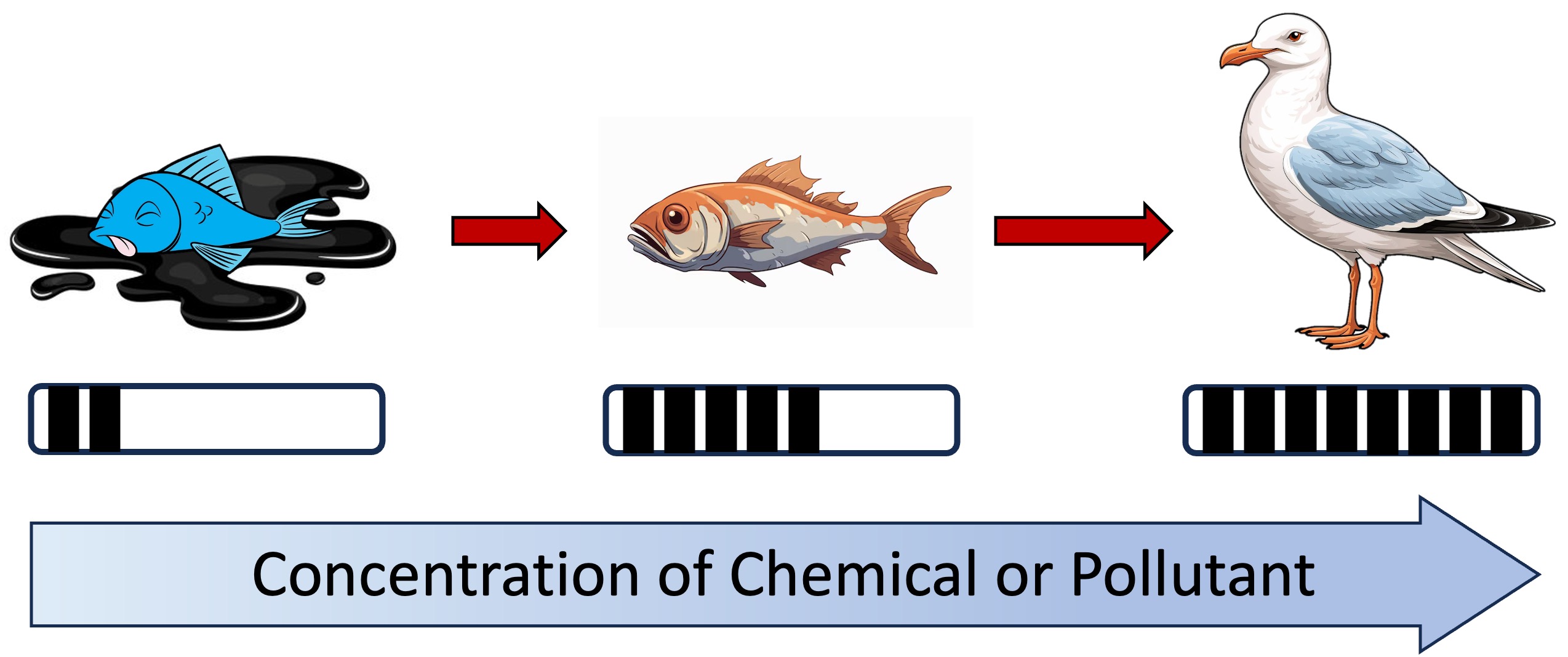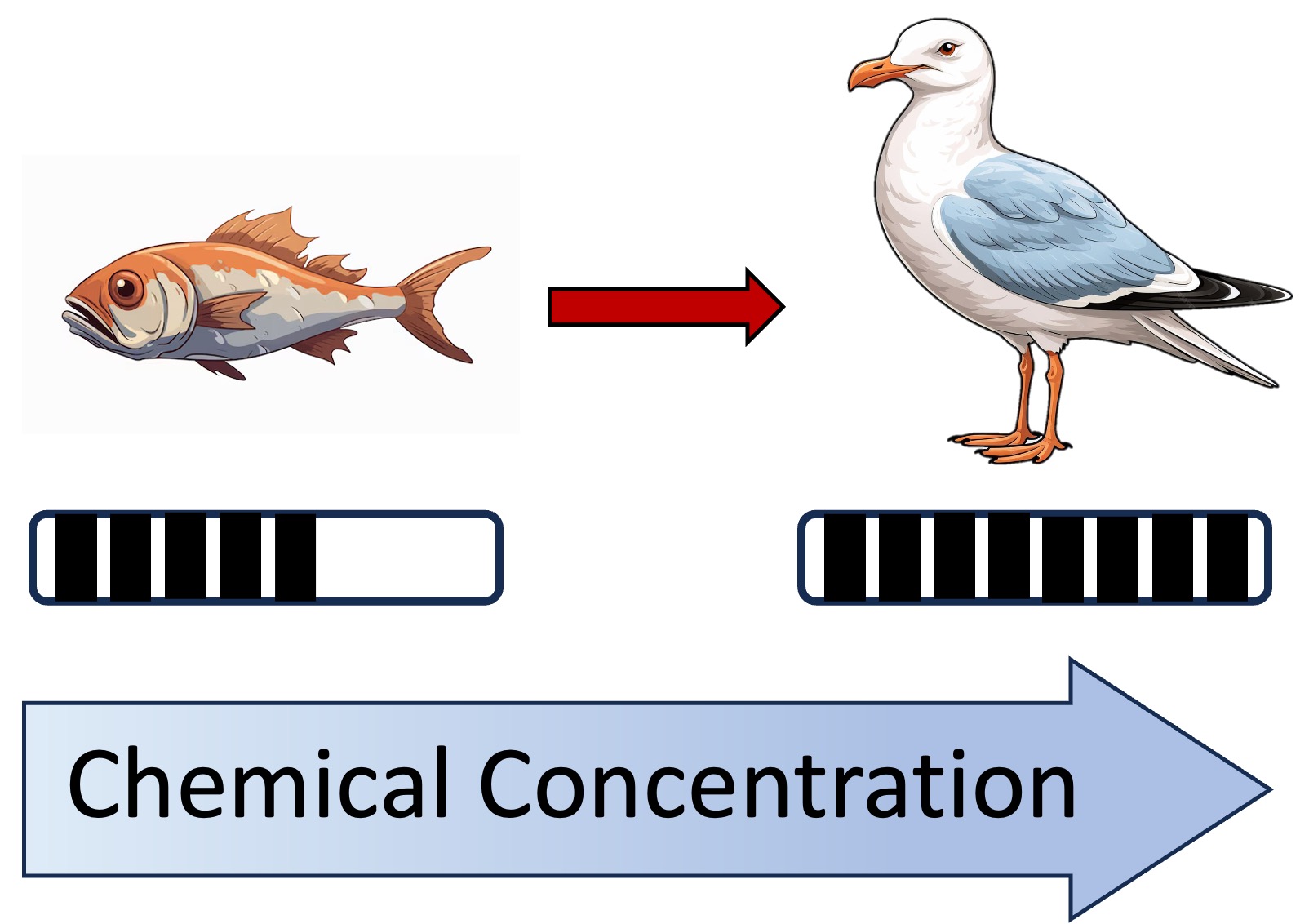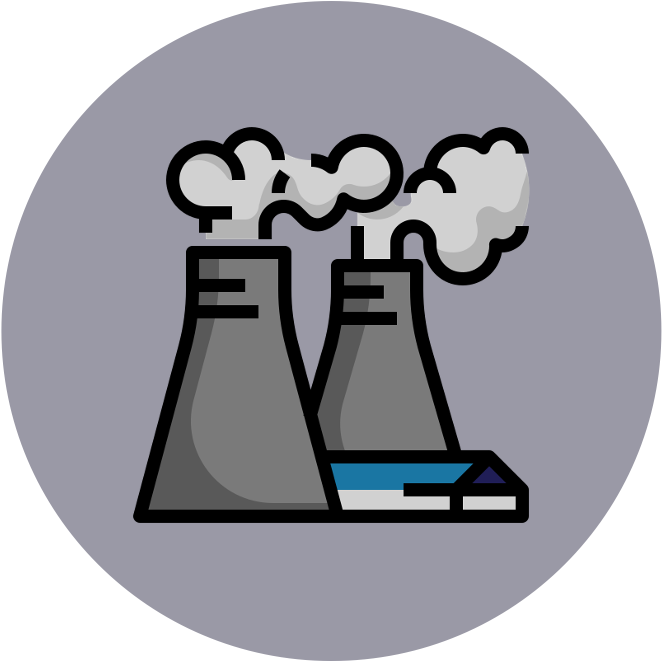

Biomagnification
Biomagnification is the process in which chemical substances become more concentrated at each trophic level
-
In contrast, bioaccumulation refers to the build up of a chemical substance in the tissues of a single organism
Biomagnification occurs because organisms at higher trophic levels must consume more biomass to meet requirements
-
Energy transformations are only ~10% efficient, so higher order consumers must eat more to meet energy demands
-
If the chemical is persistent, higher order consumers will experience increased contamination from the substance
DDT (dichloro-diphenyl-trichloroethane)
-
DDT is a chemical pesticide that is sprayed on crops and subsequently washed into waterways at low concentrations
-
As it is fat soluble, it is retained within the tissues of aquatic algae instead of being excreted
-
At each subsequent trophic level the concentration of DDT stored in the body increases due to increased food intake
-
Very high levels of DDT were discovered in birds that preyed on fish, and was found to interfere with eggshell formation
-
Birds exposed to high levels of DDT were found to produce thinner shells, which decreased survival rates of fledglings
-
The use of DDT is now largely restricted in most countries (except in circumstances when dealing with mosquito larvae that transmit malaria)
Mercury
-
Mercury is a heavy metal that can be released into the environment through activities such as coal-fired power generation and gold mining
-
The mercury is then converted by microorganisms into highly toxic methyl-mercury, which accumulates in the bodies of consumers (such as fish)
-
At each subsequent trophic level, the concentrations of methyl-mercury within the tissues increases due to increased food intake
-
This can lead to mercury poisoning in humans who eat the larger predatory fish (like tuna or swordfish)
Biomagnification







